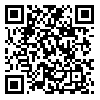Mon, Dec 1, 2025
[Archive]
Volume 10, Issue 2 (June 2014)
IJEEE 2014, 10(2): 133-142 |
Back to browse issues page
Download citation:
BibTeX | RIS | EndNote | Medlars | ProCite | Reference Manager | RefWorks
Send citation to:



BibTeX | RIS | EndNote | Medlars | ProCite | Reference Manager | RefWorks
Send citation to:
Adineh B, Rajabi Mashhadi H, Hajiabadi M E. Determining Appropriate Buses and Networks for Applying Demand Side Management Programs by Structural Analysis of EENS. IJEEE 2014; 10 (2) :133-142
URL: http://ijeee.iust.ac.ir/article-1-617-en.html
URL: http://ijeee.iust.ac.ir/article-1-617-en.html
Abstract: (5974 Views)
The main goal of this paper is to structurally analyze impact of DSM programs on reliability indices. A new approach is presented to structurally decompose reliability index Expected Energy Not Supplied (EENS) by using Monte Carlo simulation. EENS is decomposed into two terms. The first term indicates EENS which is caused by generation contingencies. The second term indicates EENS which is caused by transmission and generation contingencies. The proposed approach can be used to indicate appropriate buses for applying DSM. Furthermore, networks are studied at two levels HLI and HLII. Studies show that in some networks reliability indices are affected mostly at the HLI level. While in some other networks, reliability indices are influenced mostly at the HLII level. It means that in these networks, reliability indices are affected by transmission contingencies. Then, it is shown that the implementation of load shifting is effective in some networks and buses. These are the ones which their EENS is more influenced by generation contingencies. However it is not effective in the ones which their EENS is more influenced by transmission contingencies. The simulation results on the IEEE-RTS and Khorasan network show the efficiency of the proposed approach.
Keywords: Expected Energy Not Supplied (EENS) , Demand Side Management (DSM) , Monte Carlo Simulation , Reliability
Type of Study: Research Paper |
Subject:
Demand Side Management
Received: 2013/08/11 | Revised: 2014/06/23 | Accepted: 2014/06/23
Received: 2013/08/11 | Revised: 2014/06/23 | Accepted: 2014/06/23
| Rights and permissions | |
 |
This work is licensed under a Creative Commons Attribution-NonCommercial 4.0 International License. |







